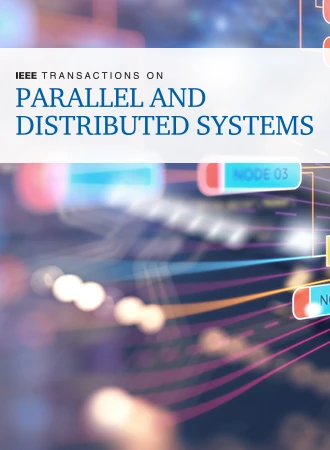The Static Allocation is Not a Static: Optimizing SSD Address Allocation Through Boosting Static Policy
IF 5.6
2区 计算机科学
Q1 COMPUTER SCIENCE, THEORY & METHODS
IEEE Transactions on Parallel and Distributed Systems
Pub Date : 2024-03-30
DOI:10.1109/TPDS.2024.3407367
引用次数: 0
Abstract
The address allocation policy in SSD aims to translate the logical address of I/O requests into a physical address, and the static address allocation is widely used in modern SSD. Through extensive experiments, we find that there are significant differences in the utilization of SSD parallelism among different static address allocation policies. We also observe that the fixed address allocation design prevents SSDs from continuing to meet the challenges posed by cloud workloads and misses the possibility of further optimization. These situations stem from our excessive reliance on SSD parallelism over time. In this paper, we propose静态分配并非一成不变:通过提升静态策略优化固态硬盘地址分配
固态硬盘中的地址分配策略旨在将 I/O 请求的逻辑地址转换为物理地址,而静态地址分配在现代固态硬盘中得到了广泛应用。通过大量实验,我们发现不同静态地址分配策略对固态硬盘并行性的利用率存在显著差异。我们还发现,固定地址分配设计阻碍了固态硬盘继续应对云工作负载带来的挑战,并错失了进一步优化的可能性。这些情况都源于我们长期以来对固态硬盘并行性的过度依赖。在本文中,我们提出了混合静态地址分配策略HsaP,它能自适应地选择最佳静态分配策略,以满足运行时的固态硬盘性能。HsaP 是一种基于静态地址分配策略的动态调度方案。静态策略确保了 HsaP 性能稳定、开销轻巧,而动态调度能有效结合不同的分配策略,为给定的固态硬盘状态选择性能最佳的静态映射模式。同时,HsaP 还能通过平面重新分配和数据重写,进一步同时提高固态硬盘的读写性能。实验结果表明,与几种最先进的地址分配方法相比,HsaP 在各种最新的云块存储跟踪中实现了显著的读写性能提升。
本文章由计算机程序翻译,如有差异,请以英文原文为准。
求助全文
约1分钟内获得全文
求助全文
来源期刊

IEEE Transactions on Parallel and Distributed Systems
工程技术-工程:电子与电气
CiteScore
11.00
自引率
9.40%
发文量
281
审稿时长
5.6 months
期刊介绍:
IEEE Transactions on Parallel and Distributed Systems (TPDS) is published monthly. It publishes a range of papers, comments on previously published papers, and survey articles that deal with the parallel and distributed systems research areas of current importance to our readers. Particular areas of interest include, but are not limited to:
a) Parallel and distributed algorithms, focusing on topics such as: models of computation; numerical, combinatorial, and data-intensive parallel algorithms, scalability of algorithms and data structures for parallel and distributed systems, communication and synchronization protocols, network algorithms, scheduling, and load balancing.
b) Applications of parallel and distributed computing, including computational and data-enabled science and engineering, big data applications, parallel crowd sourcing, large-scale social network analysis, management of big data, cloud and grid computing, scientific and biomedical applications, mobile computing, and cyber-physical systems.
c) Parallel and distributed architectures, including architectures for instruction-level and thread-level parallelism; design, analysis, implementation, fault resilience and performance measurements of multiple-processor systems; multicore processors, heterogeneous many-core systems; petascale and exascale systems designs; novel big data architectures; special purpose architectures, including graphics processors, signal processors, network processors, media accelerators, and other special purpose processors and accelerators; impact of technology on architecture; network and interconnect architectures; parallel I/O and storage systems; architecture of the memory hierarchy; power-efficient and green computing architectures; dependable architectures; and performance modeling and evaluation.
d) Parallel and distributed software, including parallel and multicore programming languages and compilers, runtime systems, operating systems, Internet computing and web services, resource management including green computing, middleware for grids, clouds, and data centers, libraries, performance modeling and evaluation, parallel programming paradigms, and programming environments and tools.
 求助内容:
求助内容: 应助结果提醒方式:
应助结果提醒方式:


